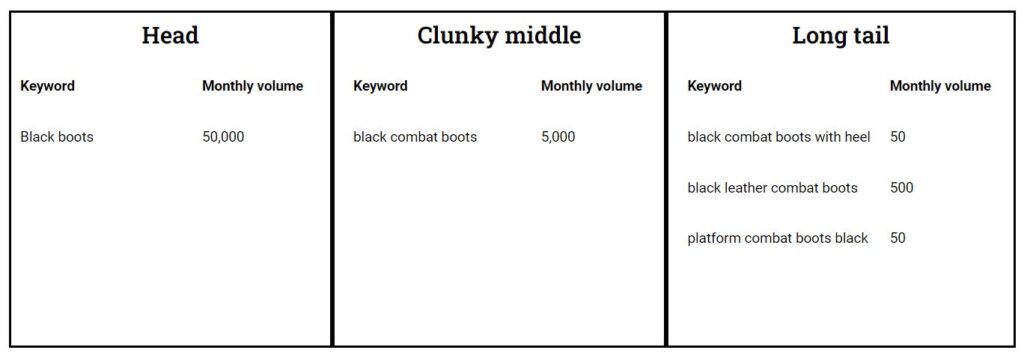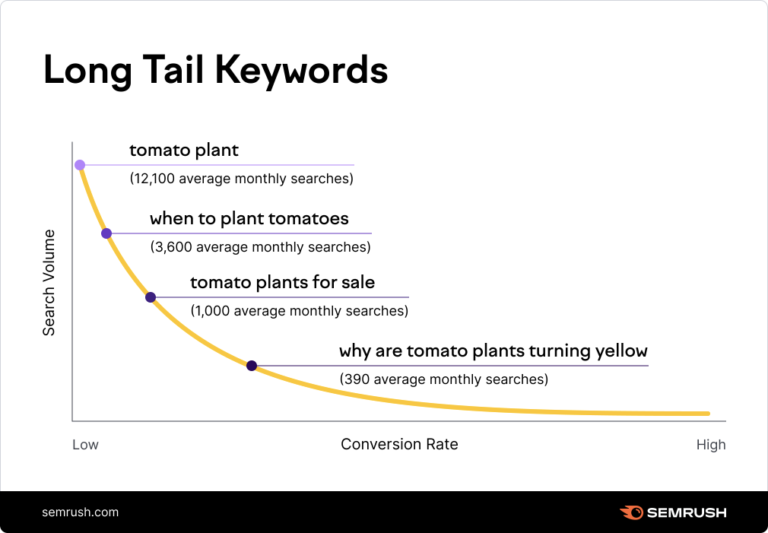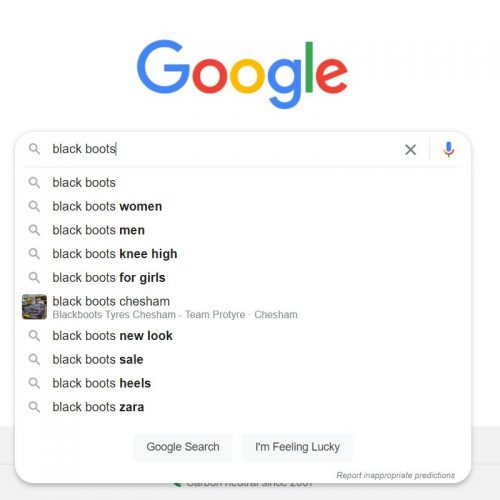What are long tail keywords?
You may well have heard of the phrase long tail keywords and perhaps even been told you should be using them as part of your SEO strategy. But what on earth are they and how do they help your SEO efforts?
What is a long tail keyword?
Some SEOs will prescribe a certain word count to long tail keywords which, quite frankly, overcomplicates things. Put simply, they are multi word phrases which, typically, attract lower volume searches. Usually an SEO keyword strategy will consist of a ‘head’ phrase, followed by, what is often affectionately termed, ‘the clunky middle’ and then finally ‘long tail keywords’.
Take the following example. If your ecommerce site sold boots you might want to target black boots. Therefore, your keyword strategy might look a little like this:
Head
Keyword
Black boots
Monthly volume
50,000
Clunky middle
Keyword
black combat boots
Monthly volume
5,000
Long tail
Keyword
black combat boots with heel
black leather combat boots
platform combat boots black
Monthly volume
50
500
50

Long tail keywords are sometimes referred to as low volume search phrases and whilst this may be true in some instances, search volume can really vary depending on sector and niche.
Why use them?
Long tail keywords typically offer two clear benefits to businesses:
- you can target keywords in your ‘topic’ for which the competition is currently too high for you to gain traction
- often they are phrases in which the search intent in closer to a conversion action
Take the black boot example above. If I’m searching for black boots I might be browsing for ideas and gathering information as I decided what type of boots I want. If I’m searching for platform combat boots black I know exactly what type and colour of boot I want and am therefore closer to making a purchase decision.
Semrush have put together a handy graph which depicts search intent and conversion potential really clearly:

How do I find long tail keywords?
You don’t have to have a subscription based SEO service to find long tail keywords. Anyone can sign up for a Google Ads account for free and not run any ads. Once you have an account you can use their Keyword Planner tool to discover long tail keywords. Simply start with your ‘head’ keyword press enter and scroll through their keyword suggestions.
Another great place (and often forgotten about!) is to use Google suggest. On Google’s homepage simply type in your keyword / search term and Google will create a drop down of suggested searches based on frequency and search behaviour of other Google users:

Keen to give your SEO strategy a boost?
Arrange a FREE discovery call to find out how I could help
